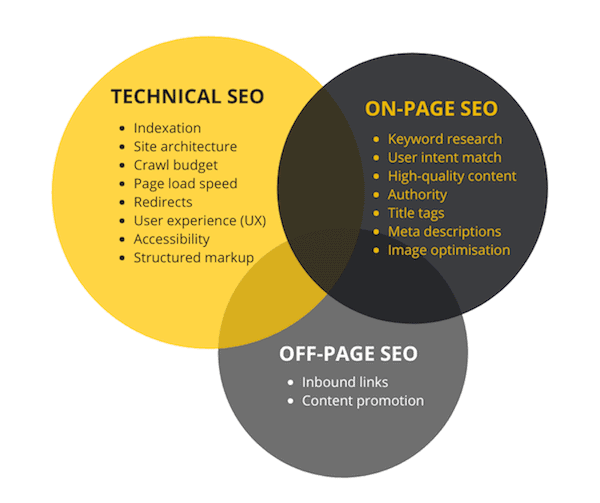That’s a question that many business owners think about when weighing up whether search engine optimisation is worth their investment, or whether they should choose a different digital marketing approach.
Whichever method you opt-in for, you will most likely aim to get a consistent stream of qualified leads, at the lowest cost possible. Search Engine Optimisation (SEO) is often hailed for its super-power to generate business leads with a series of on-going and seemingly intricate techniques. And having seen our SEO experts at Generate Leads Online take many businesses up to the top of page #1 on Google results pages, by following a carefully put together SEO strategy, we can definitely attest to this!
Compared to some of the other online lead generation methods, it is a slow-burning process but the results are worth the wait. So, if you’re thinking of investing in SEO marketing services to generate leads for your business, it’s important you understand what goes into the process of making your website rank well on Google. In this guide, we are going to go through the steps involved in implementing a full SEO strategy and explain how to use SEO to generate leads online.
WHAT IS SEARCH ENGINE OPTIMISATION (SEO)?
SEO can be described as a process of improving your website and online presence to improve its rankings in search engines, such as Google, and drive more traffic to your website. By editing and adjusting different aspects of your website, and using the right keywords, SEO ensures your website shows up in search engines and matches the ‘user intent’ of your dream leads.
HOW SEO HELPS YOUR BUSINESS GENERATE LEADS?
The higher your website ranks in search engines, the more clicks it’s going to get from users. The more visitors on your website, the higher the chance of some of them becoming interested in your products or services. Eventually, that interest turns into desire and the website visitor becomes a lead, or maybe even a conversion.
Without an SEO strategy in place, it’s very unlikely that your target audience will ever find your website amongst the competitors who are investing in search engine optimisation. Out of the 40k searches that Google receives per second, only a third of those people bother clicking through to the second results page! You really have a small chance of being found via organic search if your website appears somewhere on page 2, or beyond.
For those businesses focusing on a local clientele, SEO lead generation works particularly well thanks to the Google 2014 Pigeon update, which gave those businesses the power to compete in search engines on a local level. Reports show that 72% of consumers who perform a local search visit a store within 5 miles of their current location. Therefore, if you run a business that serves the local area, SEO can be a powerful tool for you. An important aspect of your local search engine optimisation is building out your Google My Business profile. Read our 10 Local SEO Tips to learn how to do it successfully.
Every few years, Google releases another updated version of their search engine algorithm allowing businesses to leverage SEO techniques for marketing purposes. The 2013 Hummingbird update focused on the semantics of the terms users enter into the search engine. What this means is that Google now understands the real meaning behind the words users type in, and what exactly it is that they’re after, which meant that SEO experts had to learn to consider “user intent” in their processes. Since then there has been more emphasis on websites satisfying Google’s search intent requirement in order to rank higher, which comes down to short and long-tail keywords used on your website. Learning about and leveraging the different types of keyword intent allows you to improve the ranking of individual pages on your website and as a result, generate qualified leads for those products or services.
The higher your website ranks in search engines, the more clicks it’s going to get from users. The more visitors on your website, the higher the chance of some of them becoming interested in your products or services. Eventually, that interest turns into desire and the website visitor becomes a lead, or maybe even a conversion.
Without an SEO strategy in place, it’s very unlikely that your target audience will ever find your website amongst the competitors who are investing in search engine optimisation. Out of the 40k searches that Google receives per second, only a third of those people bother clicking through to the second results page! You really have a small chance of being found via organic search if your website appears somewhere on page 2, or beyond.
For those businesses focusing on a local clientele, SEO lead generation works particularly well thanks to the Google 2014 Pigeon update, which gave those businesses the power to compete in search engines on a local level. Reports show that 72% of consumers who perform a local search visit a store within 5 miles of their current location. Therefore, if you run a business that serves the local area, SEO can be a powerful tool for you. An important aspect of your local search engine optimisation is building out your Google My Business profile. Read our 10 Local SEO Tips to learn how to do it successfully.
Every few years, Google releases another updated version of their search engine algorithm allowing businesses to leverage SEO techniques for marketing purposes. The 2013 Hummingbird update focused on the semantics of the terms users enter into the search engine. What this means is that Google now understands the real meaning behind the words users type in, and what exactly it is that they’re after, which meant that SEO experts had to learn to consider “user intent” in their processes. Since then there has been more emphasis on websites satisfying Google’s search intent requirement in order to rank higher, which comes down to short and long-tail keywords used on your website. Learning about and leveraging the different types of keyword intent allows you to improve the ranking of individual pages on your website and as a result, generate qualified leads for those products or services.
What’s more, contradictory to what many people assume, SEO can result in more conversions than Pay-Per-Click ads, which appear above organic search results. Statistics show 70%-80% of people ignore the sponsored results in favour of organic listings. Although, unlike paid advertising, SEO does not offer the ability to retarget the web users who once visited your website but didn’t convert, ranking well in organic searches may soon win you more leads and conversions than those using PPC retargeting. With more concern over user’s privacy, companies such as Apple and Google have announced big changes that involve blocking third-party cookies. This will make it harder for marketers to set systems in place that track and follow web users when they leave without converting.
More and more businesses recognise the huge potential of investing in SEO as a lead generation method. So if you don’t want to fall behind, adding SEO to your digital marketing efforts is no brainer. Now, before we discuss how to generate leads with search engine optimisation, let’s look at the different types of SEO practices.
SEO CAN BE BROKEN DOWN INTO THREE TYPES:
- You can think of technical SEO as all the things you need to do in order to ‘pay’ for your fast-track entrance onto the search engine results pages. It is all the processes that enable search engines, such as Google to crawl your website and add them to its database.
- Once you get onto the search engine you’ll perform the on-page SEO to improve your ranking by satisfying Google’s criteria. This is where most of the lead generation potential lies. However, without technical SEO, your on-page SEO will not bring the best results.
- Off-page SEO is the promotion of your business website on other platforms and backlinking it to other respectable sites. This supports your website and helps to bring it up higher in search.
For an SEO strategy to work your search engine expert will ensure that he or she covers all three types of search engine optimisation, and keeps up with the demands of the strategy on-going. Without a sustained effort, even websites at the top of page results will see a drop to lower positions as competition catches up.
12 STEPS TO GENERATE LEADS ONLINE WITH SEO
A good search engine optimisation strategy will cover all three types of SEO in order to drive organic traffic and generate you leads online. Our 12-step guide will show you what goes into each type of SEO and how it assists the process of getting leads from organic searches.
- Steps 1-6 focus on technical SEO.
- Steps 7-11 refer to on-page SEO practices.
- Step 12 talks about off-page SEO techniques.
TABLE OF CONTENTS
Step 1 – Index your website
Step 2 – Take time to consider the site architecture & crawl budget
Step 3 – Optimise your site’s load speed
Step 4 – Set up any necessary redirects
Step 5 – Check your website offers good user experience (UX) & is accessible
Step 6 – Add structured markup to the schema of your website where relevant
Step 7 – Perform continuous keyword research & optimise for intent match and search entities
Step 8 – Keep on creating high-quality content to assert your authority & build trust
Step 9 – Capture your leads
Step 10 – Assign title tags, meta descriptions & perform image optimisation
Step 11 – Track, analyse & improve your content and rankings on a regular basis
Step 12 – Secure as many high-value inbound links as you can & promote your content
GENERATE LEADS WITH TECHNICAL SEO
It’s important to start with the foundations which are included in technical SEO. The thing about technical SEO is that it’s directly connected with your website design. Here at our web design and SEO agency – Generate Leads Online, when a new SEO client comes to us, the first thing we look at is their website. Very often we end up redesigning their websites before even starting on SEO as this helps us to establish a foundation for a strong search engine optimisation strategy. Similarly, when building websites we suggest designs that take SEO into consideration, even if the client isn’t planning to invest in search engine marketing services with us. We practice holistic web design and this is just one way it’s expressed in our work.
So, let’s look at what technical steps should be taken and how do they help you to get SEO leads?
This is like applying for that fast-track ticket to get onto the search engine results pages, which we mentioned above. You’re applying to be added to the database of Google so that they can show your website in searches. You’ll need to create a sitemap of your website and submit it to Google Search Console. Although we’ve put this as the first step, you shouldn’t really index your website until your on-page SEO is done. In this way, you’re giving your website the best chance to rank well from day one. We’ve put this as Step 1 as it is one of the most fundamental things you need to do to connect your website to the search engine. Note that there is a propagation period and it can take a few days or even weeks for it to start showing up on Google.
About the author:
GLO is an award-winning full-service digital marketing agency, delivering insight-led, results-driven services on a holistic basis. We’ve made it our mission to cultivate interactive digital experiences that excite and inspire. Our in-house specialists work as an extension of businesses and brands, using a bespoke process from the start to the end of your project, ensuring 100% satisfaction, every time.





